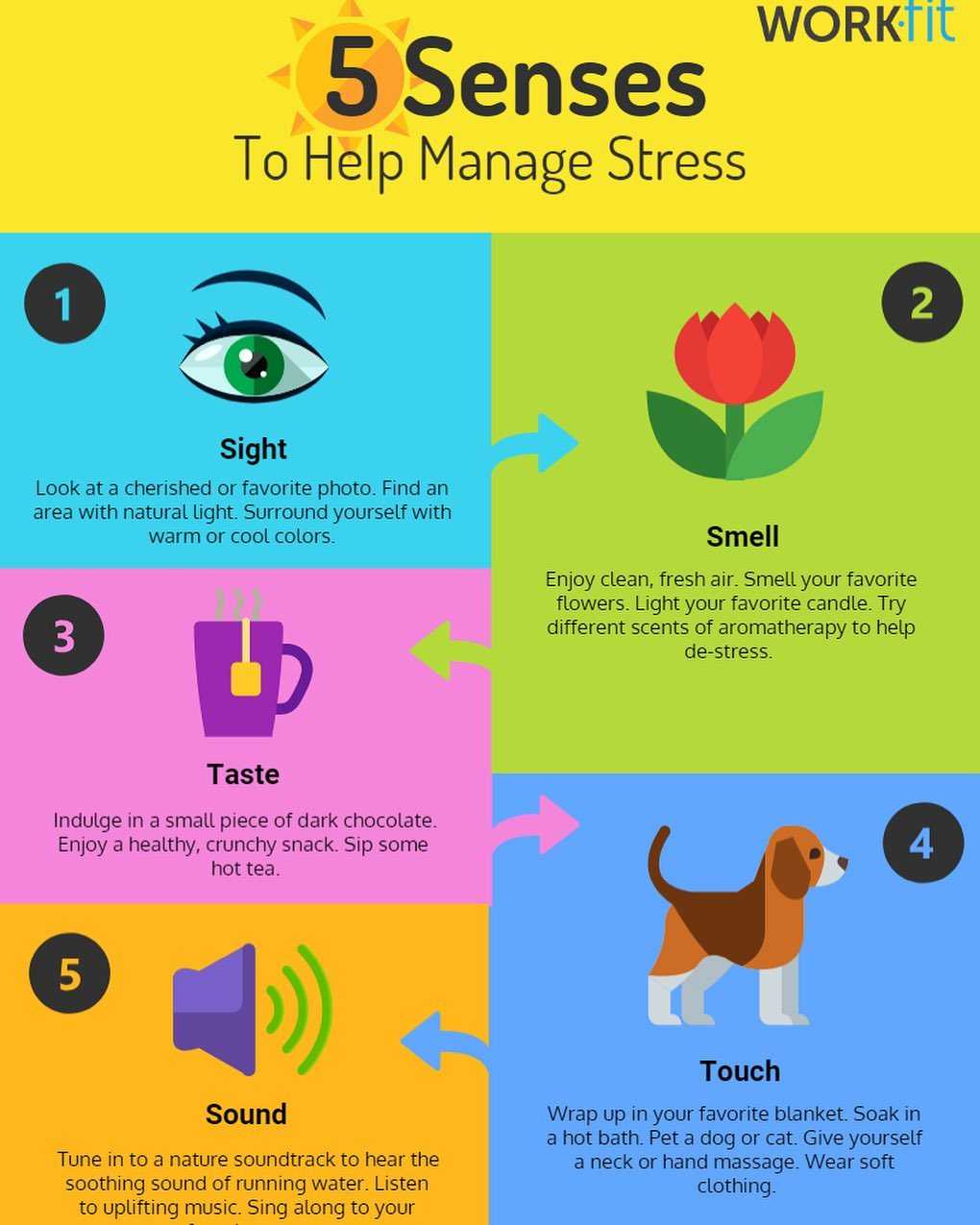In today’s fast-paced world, stress has become an unavoidable part of life. Whether it’s work, relationships, or financial worries, stress can take a toll on our physical and mental well-being. Learning how to manage stress effectively is crucial for maintaining a healthy and balanced life.
Relaxation techniques are powerful tools that can help individuals combat stress, reduce tension, and promote overall relaxation. These techniques work by activating the body’s natural relaxation response, which counteracts the effects of stress and brings about a state of calmness and well-being. Engaging in relaxation exercises regularly can significantly improve a person’s ability to cope with stressors and navigate life’s challenges with greater resilience.
In this article, we will delve into some of the most effective relaxation techniques that can be easily incorporated into your daily routine. These techniques are accessible to individuals of all ages and fitness levels, requiring minimal time and effort.
what are some relaxation techniques for stress management
Effective techniques for stress relief:
- Deep breathing exercises
- Progressive muscle relaxation
- Meditation and mindfulness
- Yoga and gentle stretching
- Spending time in nature
- Listening to soothing music
- Engaging in hobbies and creative pursuits
Regular practice can reduce stress and promote relaxation.
Deep breathing exercises
Deep breathing exercises are a simple yet powerful relaxation technique that can be practiced anywhere, anytime. When you breathe deeply, your body’s natural relaxation response is activated, which helps to reduce stress and promote a sense of calm.
- Belly breathing:
Place one hand on your chest and the other on your stomach. Take a deep breath in through your nose, allowing your stomach to expand while your chest remains relatively still. Exhale slowly through your mouth, feeling your stomach contract.
- 4-7-8 breathing:
Inhale deeply through your nose for a count of four, hold your breath for a count of seven, and exhale slowly through your mouth for a count of eight. Repeat this cycle for several minutes.
- Box breathing:
Imagine a square divided into four equal parts. Inhale deeply for a count of four while tracing the first side of the square with your mind. Hold your breath for a count of four while tracing the second side. Exhale slowly for a count of four while tracing the third side. Finally, hold your breath out for a count of four while tracing the fourth side. Repeat this cycle for several minutes.
- Alternate nostril breathing:
Place your right thumb over your right nostril and inhale deeply through your left nostril. Close your left nostril with your ring finger and exhale through your right nostril. Now, inhale through your right nostril and close it with your thumb, and exhale through your left nostril. Continue alternating nostrils for several minutes.
Deep breathing exercises can be practiced for as little as five minutes or as long as 30 minutes. Even a few minutes of deep breathing can help to reduce stress and promote relaxation.
Progressive muscle relaxation
Progressive muscle relaxation is a relaxation technique that involves tensing and then relaxing different muscle groups in the body. This technique helps to release tension and promote deep relaxation.
- Start by lying down or sitting in a comfortable position.
Close your eyes and take a few deep breaths to relax your body.
- Focus on one muscle group at a time.
Starting with your feet, tense the muscles in that area for a few seconds. Then, release the tension and allow the muscles to relax completely.
- Continue working your way up the body.
Tense and relax the muscles in your legs, buttocks, abdomen, back, chest, shoulders, arms, and neck. Pay attention to any areas of tension and focus on releasing it.
- Once you have completed one cycle, take a few deep breaths and allow your body to relax completely.
You can repeat the cycle as many times as needed.
Progressive muscle relaxation can be practiced for as little as 10 minutes or as long as 30 minutes. Even a few minutes of practice can help to reduce stress and promote relaxation.
Meditation and mindfulness
Meditation and mindfulness are practices that involve training the mind to focus on the present moment and to let go of distracting thoughts and worries. These practices can help to reduce stress, improve focus, and promote overall well-being.
- Find a quiet and comfortable place to sit or lie down.
Close your eyes and take a few deep breaths to relax your body.
- Focus on your breath.
Pay attention to the sensation of your breath as it enters and leaves your body. Notice the rise and fall of your chest and abdomen.
- When your mind wanders, gently bring it back to your breath.
It is normal for your mind to wander during meditation. The key is to not get discouraged and to simply bring your attention back to your breath each time it wanders.
- Continue meditating for as long as you like.
Even a few minutes of meditation can be beneficial. As you practice regularly, you may find that you are able to meditate for longer periods of time.
Meditation and mindfulness can be practiced in many different ways. Some people prefer to follow guided meditations, while others prefer to meditate in silence. There are also many different types of mindfulness practices, such as mindful breathing, mindful eating, and mindful walking. Experiment with different practices to find what works best for you.
Yoga and gentle stretching
Yoga and gentle stretching are mind-body practices that combine physical postures, breathing exercises, and meditation to promote relaxation and well-being. These practices can help to reduce stress, improve flexibility, and increase strength.
- Find a quiet and comfortable place to practice.
You can practice yoga or gentle stretching in the comfort of your own home or at a yoga studio.
- Start with simple poses.
There are many different yoga poses, but it is best to start with simple poses that you can do comfortably. As you become more comfortable with the poses, you can gradually add more challenging poses to your practice.
- Focus on your breath.
Pay attention to the sensation of your breath as you move through the poses. Breathe deeply and slowly, and allow your breath to guide your movements.
- Listen to your body.
It is important to listen to your body and to avoid pushing yourself too hard. If you feel any pain, stop the pose and rest.
Yoga and gentle stretching can be practiced for as little as 10 minutes or as long as an hour. Even a few minutes of practice can be beneficial. As you practice regularly, you may find that you are able to hold the poses for longer periods of time and that you feel more relaxed and flexible.
Spending time in nature
Spending time in nature has been shown to have numerous benefits for both our physical and mental health. Being in nature can help to reduce stress, improve mood, and boost creativity. It can also help to lower blood pressure, improve sleep, and reduce inflammation.
- Find a natural setting that you enjoy.
This could be a park, a beach, a forest, or even your own backyard. The key is to find a place where you feel comfortable and relaxed.
- Spend time in nature regularly.
Even a short walk in the park can be beneficial. Aim to spend at least 20 minutes in nature each day.
- Engage your senses.
Pay attention to the sights, sounds, smells, and textures of nature. Notice the beauty of the flowers, the sound of the birds singing, and the feel of the wind on your skin.
- Leave your devices behind.
Take this time to disconnect from technology and focus on your surroundings. Allow yourself to be fully present in the moment.
Spending time in nature can be a powerful way to reduce stress and promote relaxation. When you are in nature, your body’s natural relaxation response is activated, which helps to lower your heart rate, blood pressure, and stress hormones. Nature also provides a sense of peace and tranquility, which can help to calm your mind and reduce anxiety.
Listening to soothing music
Listening to soothing music can be a powerful way to reduce stress and promote relaxation. Music has the ability to affect our mood, heart rate, and breathing. When we listen to music that we enjoy, our bodies release endorphins, which have mood-boosting and pain-relieving effects.
There are many different types of music that can be soothing, such as classical music, nature sounds, and ambient music. The best type of music for relaxation is whatever you find personally enjoyable and calming. Some people find that listening to music with a slow tempo and a gentle melody is most relaxing, while others prefer more upbeat music.
To get the most benefit from listening to music for relaxation, find a comfortable place to sit or lie down and close your eyes. Focus on the music and allow yourself to be transported to a peaceful and relaxing place. If your mind starts to wander, gently bring it back to the music.
You can listen to soothing music for as little as 10 minutes or as long as an hour. Even a short period of listening can be beneficial. If you listen to music regularly, you may find that you are able to relax more easily and that you feel less stressed overall.
In addition to reducing stress, listening to soothing music can also help to improve sleep, reduce pain, and boost mood. It can also be a helpful tool for managing anxiety and depression.
Engaging in hobbies and creative pursuits
Engaging in hobbies and creative pursuits can be a great way to reduce stress and promote relaxation. When you are engaged in an activity that you enjoy, your body releases endorphins, which have mood-boosting and pain-relieving effects. Hobbies and creative pursuits can also help to take your mind off of your worries and focus on the present moment.
There are many different hobbies and creative pursuits to choose from, so there is sure to be something that you will enjoy. Some popular hobbies include reading, writing, painting, drawing, playing music, gardening, cooking, and hiking. If you are not sure what you want to do, try something new! You might be surprised at what you discover.
To get the most benefit from hobbies and creative pursuits, find an activity that you can do regularly. Even a short period of time spent on your hobby each day can be beneficial. Make sure to choose an activity that you find enjoyable and that you can do without feeling stressed or pressured.
Engaging in hobbies and creative pursuits can have a number of benefits for your mental and physical health. In addition to reducing stress, hobbies and creative pursuits can also help to improve mood, boost creativity, and increase self-esteem. They can also provide a sense of purpose and community.
If you are looking for a way to reduce stress and improve your overall well-being, consider engaging in a hobby or creative pursuit. There are many different activities to choose from, so you are sure to find something that you enjoy.
FAQ
Here are some frequently asked questions about stress management:
Question 1: What are some common signs and symptoms of stress?
Answer: Common signs and symptoms of stress include feeling overwhelmed, anxious, or irritable; having difficulty sleeping or concentrating; experiencing headaches, muscle pain, or fatigue; and changes in appetite or weight.
Question 2: What are some simple relaxation techniques that I can do to manage stress?
Answer: Some simple relaxation techniques include deep breathing exercises, progressive muscle relaxation, meditation, yoga, and spending time in nature.
Question 3: How can I reduce stress at work?
Answer: Some tips for reducing stress at work include setting realistic goals, taking breaks throughout the day, delegating tasks, and learning to say no to additional work.
Question 4: How can I manage stress in my personal life?
Answer: Some tips for managing stress in your personal life include exercising regularly, getting enough sleep, eating a healthy diet, and spending time with loved ones.
Question 5: When should I seek professional help for stress?
Answer: You should seek professional help for stress if you are experiencing severe stress that is interfering with your daily life or if you are unable to manage stress on your own.
Question 6: What are some resources available to help me manage stress?
Answer: There are many resources available to help you manage stress, such as books, articles, websites, and apps. You can also talk to your doctor or therapist about stress management strategies.
Question 7: How can I prevent stress from coming back?
Answer: To prevent stress from coming back, it is important to practice stress management techniques regularly and to make healthy lifestyle choices, such as exercising, eating a healthy diet, and getting enough sleep.
Closing Paragraph for FAQ
These are just a few of the many questions that people have about stress management. If you are struggling with stress, there are many resources available to help you. Talk to your doctor or therapist, or look for resources online or in your community.
In addition to the information provided in this FAQ, here are some additional tips for managing stress:
Tips
Here are some practical tips for managing stress:
Tip 1: Identify your stressors.
The first step to managing stress is to identify what is causing it. Once you know what your stressors are, you can start to develop strategies for dealing with them.
Tip 2: Practice relaxation techniques.
There are many different relaxation techniques that can help to reduce stress, such as deep breathing exercises, progressive muscle relaxation, meditation, and yoga. Find a relaxation technique that works for you and practice it regularly.
Tip 3: Take care of your physical health.
Eating a healthy diet, getting enough sleep, and exercising regularly can all help to reduce stress levels. When you take care of your physical health, you are also taking care of your mental health.
Tip 4: Connect with others.
Spending time with loved ones, friends, and supportive people can help to reduce stress and improve your overall well-being. Social support is an important part of stress management.
Closing Paragraph for Tips
These are just a few tips for managing stress. There are many other things that you can do to reduce stress in your life. The most important thing is to find what works for you and to make stress management a priority.
If you are struggling to manage stress on your own, don’t hesitate to seek professional help. A therapist can help you to identify the root of your stress and develop coping mechanisms.
Conclusion
Stress is a normal part of life, but it is important to manage it effectively to avoid negative consequences for our physical and mental health. There are many different relaxation techniques and stress management strategies that can help us to reduce stress and promote relaxation.
Some of the key points discussed in this article include:
- The importance of identifying our stressors.
- The benefits of practicing relaxation techniques, such as deep breathing exercises, progressive muscle relaxation, meditation, and yoga.
- The importance of taking care of our physical health by eating a healthy diet, getting enough sleep, and exercising regularly.
- The importance of connecting with others and having a strong social support network.
Closing Message
If you are struggling to manage stress on your own, don’t hesitate to seek professional help. A therapist can help you to identify the root of your stress and develop coping mechanisms. Remember, stress is a normal part of life, but it is important to take steps to manage it effectively and maintain a healthy and balanced life.
Images References :

Woody Beck, a happy parents with two kids.


